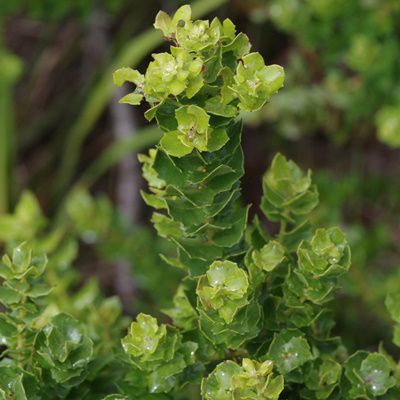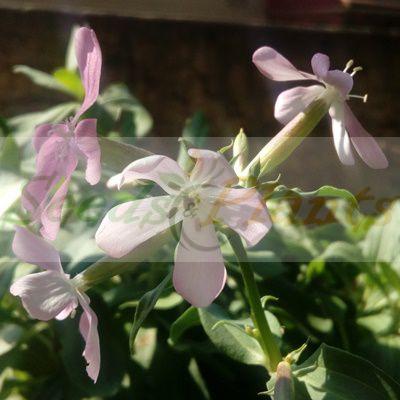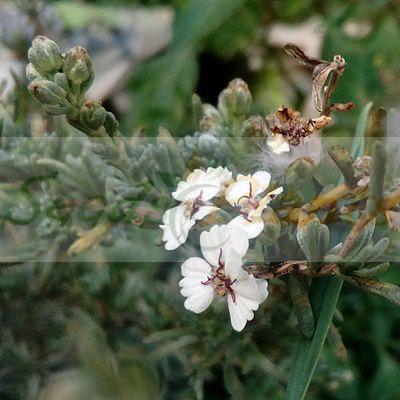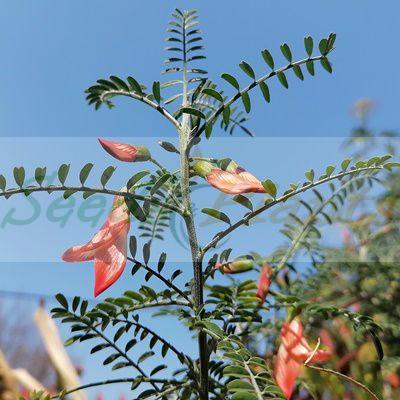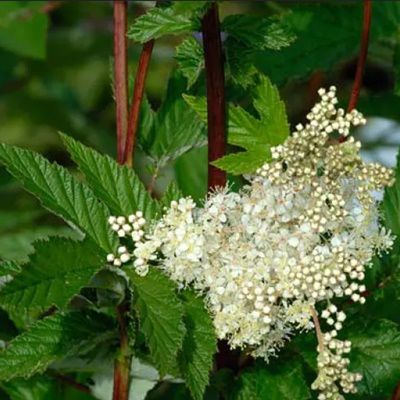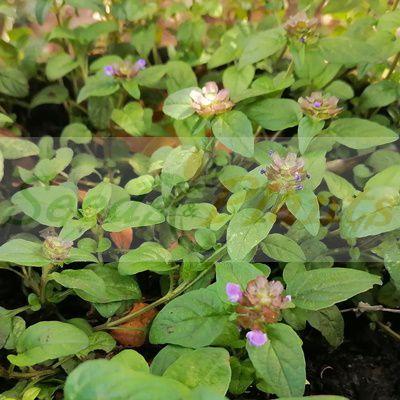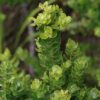🌿 Shrub Quick Facts
Shrub Info
- 🌍 Origin / Region: South Africa
- 🌳 Shrub Features: Flowering, Fruiting (Edible)
- 🌿 Foliage Type: Evergreen
- 🌸 Flower Color: Yellow-brown
Medicinal Info
- 🌿 Medicinal Part: Bark, Berry
- 🍵 Herbal Preparation: Decoction, Infusion / Tea, Ointments/Creams
- ⚕️ Healing System: African Traditional Medicine
Growth Traits
- 🌾 Plant Type: Shrub
- 🔁 Fruiting Needs: Needs Male & Female Plants
- 🪴 Growth Habit: Bushy, Low-Growing, Slow Growing, Sprawling
Growing Requirements
- 🌞 Sun Exposure: Full Sun, Partial Shade
- 💧 Water Needs: Avoid Overwatering, Regular Water
- ☀️ Growing Conditions: Cold Tolerant, Drought Tolerant, Heat Tolerant, Moderate Frost Tolerance
- 🟤 Soil Preference: Poor Soil Tolerant, Rocky, Sandy
Dune Waxberry – 10 Seeds
(Morella cordifolia)
R30.00
The Dune Waxberry plant was a valuable plant in the domestic life of the early colonists and the Khoi people.
Common Names: Waxberry, Candle Berry, Waxbush (Eng.); Duin-wasbessie and Glashout (Afr.); ilethi (Zulu).
Indoor Sowing: Spring.
Direct Sowing: Spring and Autumn.
In stock
🌿 Shrub Quick Facts
Shrub Info
- 🌍 Origin / Region: South Africa
- 🌳 Shrub Features: Flowering, Fruiting (Edible)
- 🌿 Foliage Type: Evergreen
- 🌸 Flower Color: Yellow-brown
Medicinal Info
- 🌿 Medicinal Part: Bark, Berry
- 🍵 Herbal Preparation: Decoction, Infusion / Tea, Ointments/Creams
- ⚕️ Healing System: African Traditional Medicine
Growth Traits
- 🌾 Plant Type: Shrub
- 🔁 Fruiting Needs: Needs Male & Female Plants
- 🪴 Growth Habit: Bushy, Low-Growing, Slow Growing, Sprawling
Growing Requirements
- 🌞 Sun Exposure: Full Sun, Partial Shade
- 💧 Water Needs: Avoid Overwatering, Regular Water
- ☀️ Growing Conditions: Cold Tolerant, Drought Tolerant, Heat Tolerant, Moderate Frost Tolerance
- 🟤 Soil Preference: Poor Soil Tolerant, Rocky, Sandy
Dune Waxberry (Morella cordifolia) is a low-growing, evergreen, spreading shrub. The plant was a valuable plant in the domestic life of the early colonists and the Khoi people.
It sends out slender branches horizontally that lie along the ground, with upright-growing shoots that can reach up to 2 or 3 m in height. The leaves are small, shiny, heart-shaped, toothed and gland-dotted. They have no stalk and are arranged densely and neatly along the branches. Crushed leaves have a faint, sweet scent. Flowering takes place in Mid Autumn to Early Winter.
Male plants produce many solitary catkin-like flowers in the axils of the leaves. Red-tinged buds open and elongate to yellow-brown spikes, 2-5 mm long. The female flowers are densely clustered around the stem and develop into 5-8 mm diameter, purple-blue, round berries covered with a warty layer of wax that gives them a silvery sheen.
Common Names: Waxberry, Candle Berry, Waxbush (Eng.); Duin-wasbessie and Glashout (Afr.); ilethi (Zulu)
Uses
- The wax can be used as a polish, as an ointment for dressing wounds, to make candles and to make soap.
- The berry wax has also been eaten as a food since early times, in particular by the Khoi. The wax is actually not wax, but a true fat.
- The bark of the roots and stems is used for tanning skins.
- The bark from stems and rhizomes is used medicinally as an astringent.
Growing Dune Waxberry
Indoor Sowing: Spring.
Direct Sowing: Spring and Autumn.
- Surface sow the seed into a tray that contains a soil mixture of sand and coco peat.
- Cover the seed with a thin layer of the soil mixture.
- Place the tray in a sunny area and water regularly.
- Germination in about 2 – 3 months, so patience is required.
- It grows well in sun or semi-shade, in well-drained soil and will tolerate poor soils.
- This shrub tends to spread and sends out sideways-growing shoots in odd directions. Prune to keep low or tidy.
Does this plant have medicinal uses?
Traditionally, Dune Waxberry has a history of use in African Traditional Medicine. Seeds are sold for cultivation purposes only.
Disclaimer
Medicinal Information:
All medicinal information on this website is for educational and informational purposes only and may not be construed as medical advice. The information is not intended to replace medical advice or treatment offered by healthcare professionals.
Seeds, Plants, Plant Cuttings, Geophytes and Dried Herbs:
In some countries and provinces, certain plants are deemed as invasive and are not allowed to be planted at all, whilst some plants are allowed to be grown only in certain areas or provinces. The onus is on you as the buyer to familiarize yourself with the regulations pertaining to your location, before purchasing any of our seeds, plants, plant cuttings, geophytes or dried herbs. We will not be held liable, should you purchase any seeds, plants, plant cuttings, geophytes or dried herbs. from us which are prohibited in your country or province.



